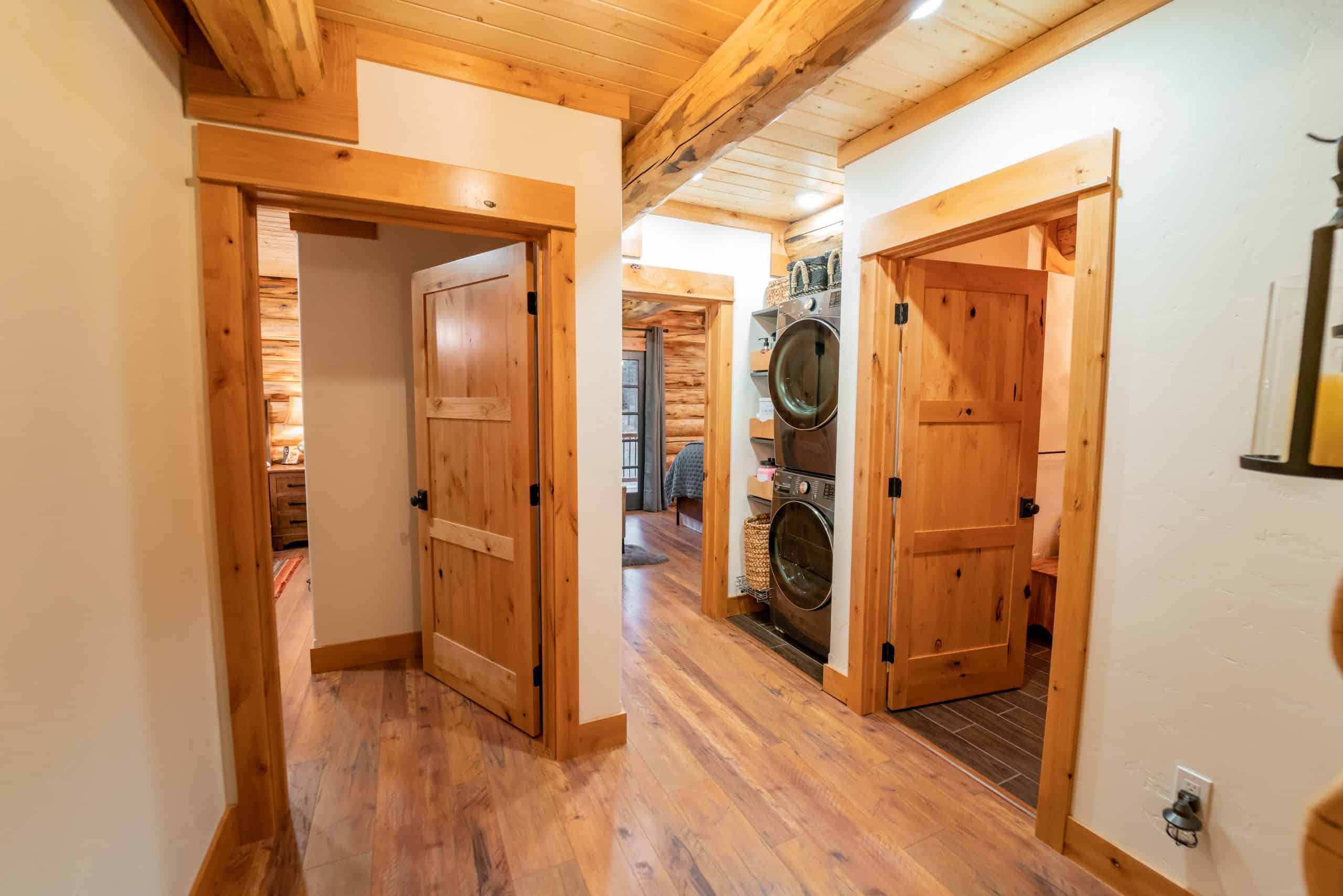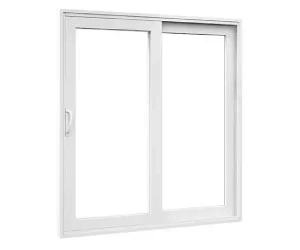Everything You Need to Learn About Choosing the Perfect Door for Any Room
Picking the ideal door for any type of room needs cautious consideration of various elements. Various door types offer unique functions, while materials can affect both resilience and aesthetics. Dimensions play an important duty in performance. Safety and security attributes can not be overlooked. As one navigates the intricacies of design and upkeep, the options can feel overwhelming. Understanding these aspects is vital for making an educated choice that stabilizes functionality snappy. What essential aspects will emerge as a lot of significant?
Recognizing Different Door Types
When choosing a door, it is vital to comprehend the numerous kinds readily available, as each serves a distinctive function and visual. One of the most typical types consist of pivoted, moving, bi-fold, and pocket doors. Hinged doors, which swing open on a set of hinges, are flexible and suitable for both indoor and outside use. Moving doors, usually made use of for patios, save space and offer a smooth change between inside and outdoors. Bi-fold doors are composed of several panels that fold to one side, making them ideal for wide openings and taking full advantage of all-natural light. Pocket doors move into the wall surface, providing a concealed option that is perfect for tiny areas. Each door type not just contributes to functionality but likewise enhances the overall layout of a room, enabling house owners to select a style that matches their personal taste and building vision. Comprehending these options is vital for making an informed choice.
Checking out Materials and Their Advantages
Choosing the right door material can markedly influence both performance and aesthetics. Numerous products supply unique benefits, making it important to review the specific needs of an area. Timber doors, for circumstances, are prized for their all-natural appeal and insulation residential properties. They can be personalized to fit any design style, yet call for routine upkeep to avoid bending and damage.
Metal doors, specifically steel, supply boosted safety and security and resilience, making them optimal for exterior applications. They are resistant to weather and bugs, but may lack the heat of timber. Fiberglass doors incorporate the most effective of both worlds, providing resilience with the look of timber, while also being energy-efficient.
Glass doors can produce a sense of visibility and permit natural light to move right into an area. They may need extra privacy options. Understanding these materials allows informed decisions that line up with both practical needs and visual preferences.

Dimension Issues: Choosing the Right Dimensions
When choosing a door, recognizing the suitable measurements is important. Typical door dimensions supply a useful starting point, however precisely measuring one's space ensures an appropriate fit (entry door replacement). Additionally, considerations for custom dimensions might develop, particularly in unique architectural setups
Conventional Door Sizes
The measurements of doors play a vital duty in both performance and visual appeal within a space. Standard door dimensions differ based on the kind of door and its desired usage. One of the most common indoor door measurements are 24, 28, 30, 32, and 36 inches in size, with elevations normally at 80 inches. Outside doors have a tendency to be bigger, usually gauging 36 inches, supplying much easier access. In addition, some common sizes may accommodate specific needs, such as dual doors or pocket doors, which can enhance style adaptability. It is essential to take into consideration these conventional dimensions when selecting a door, as they assure compatibility with existing frameworks and supply a well balanced visual influence, eventually contributing to the overall layout of the area.


Gauging Your Area
Exact measurements are vital for guaranteeing that a brand-new door fits flawlessly within an assigned opening. To start, one must determine the width and height of the door frame, taking note of any kind of irregularities in the framework. It is advisable to determine at a number of indicate represent variants, especially in older homes. The common door size is commonly 30, 32, or 36 inches, while the height usually determines 80 inches; nevertheless, it is crucial to verify these measurements against the particular opening. In addition, consider the swing direction of the door and any prospective blockages in the bordering location. Appropriate dimensions enable a smoother installment process and boost the overall performance of the door within the room.
Customized Dimensions Considerations
Custom measurements play a necessary role in guaranteeing that a door not only fits completely but likewise complements the total style of a space. doors supplier. When choosing a door, it is vital to think about the one-of-a-kind measurements of the door structure, in addition to any type of architectural functions nearby. Custom-sized doors permit for a smooth integration into various designs, whether typical, contemporary, or rustic. In addition, they can improve performance, providing appropriate clearance and ease of access. Home owners need to likewise factor in the door's density and material, as these components can influence insulation and longevity. Inevitably, buying customized dimensions brings about a tailored option that boosts the aesthetic charm and usefulness of any kind of space, creating a cohesive atmosphere
Enhancing Security Includes
While house owners focus on internet aesthetic allure when picking a door, improving safety functions remains a crucial consideration. An appropriate door not only complements the home's style however also acts as an initial line of defense versus invasions. The material plays a significant function; strong wood or steel doors typically supply exceptional toughness compared to hollow-core options.
In addition to material, house owners need to think about the door's securing systems. Multi-point locking systems give improved protection by engaging at a number of factors along the structure, making break-in harder. Reinforced frameworks and strike plates can better reinforce door security.
Additionally, the installment of clever locks uses ease and advanced protection attributes, such as remote tracking and keyless access. Homeowners ought to also assess door limits and climate removing, as these can stop unapproved accessibility and improve power performance. Eventually, integrating robust safety features guarantees comfort without compromising the door's total functionality.
Aesthetic Factors To Consider: Style and Design
A door's style and design greatly affect a home's general visual, as it acts as great site both an entry and a visual centerpiece. Choosing the ideal door includes assessing various layout components that mirror the property owner's taste and the building style of the home. Contemporary homes may take advantage of smooth, minimal doors including glass panels, while traditional styles may welcome elaborate wooden designs with intricate makings.
Shade and finish likewise play significant roles in improving visual allure; vibrant tones can make a statement, while low-key tones usually mix sympathetically with the surrounding environment. Additionally, hardware option-- such as manages and pivots-- need to enhance the door's design to develop a natural appearance.
Ultimately, a thoughtfully chosen door not only boosts aesthetic appeal however also sets the tone for the interior area, making it vital to assess aesthetic aspects during the choice process.
Maintenance and Longevity Variables
When picking a door, upkeep and toughness are necessary considerations that influence its lasting performance. An introduction of material choices discloses differing levels of upkeep and resilience, while useful maintenance pointers can extend the door's lifespan. Additionally, reviewing climate resistance is essential for making certain that the door endures ecological aspects properly.
Material Contrast Overview
Picking the ideal door material is necessary for house owners seeking resilience and reduced upkeep. Numerous materials offer distinct benefits. Steel doors, for instance, give exceptional resistance to tear his explanation and wear, making them excellent for high-traffic locations. Fiberglass doors are an additional solid alternative; they stand up to moisture and are less vulnerable to damages and scratches. Wood doors, while cosmetically pleasing, call for more maintenance due to vulnerability to warping and degeneration. Plastic doors provide an affordable service with very little upkeep, though they may not provide the very same longevity as metal or fiberglass choices. Eventually, the option of material impacts not just the door's lifespan but likewise the quantity of maintenance needed, influencing total property owner satisfaction.
Maintenance Tips for Longevity
Routine upkeep plays an important role in expanding the lifespan of doors, no matter of the material picked. Property owners must routinely check doors for any type of indicators of damages, such as cracks or bending. For wood doors, regular sanding and refinishing can avoid degeneration and maintain visual charm. Metal doors take advantage of a clean, rust-free surface, which can be attained with regular cleaning and the application of safety layers. Hinges and locks call for lubrication to ensure smooth operation, decreasing wear and tear. Furthermore, making sure that door frames are effectively lined up can avoid excessive tension on the door itself. By adhering to these maintenance methods, individuals can noticeably improve the longevity and capability of their doors, eventually adding to long-term worth.
Weather Condition Resistance Factors To Consider
Weather resistance is typically overlooked, it is an important variable in the selection and upkeep of doors. Proper weather-resistant doors can significantly boost a home's energy performance and protect against temperature, dampness, and wind variations. Materials such as fiberglass and steel supply premium durability contrasted to wood, which may warp or rot gradually. Furthermore, the high quality of seals and weather condition removing plays an essential duty in stopping drafts and water infiltration. Normal evaluations and upkeep can additionally expand a door's life-span, ensuring it stays functional and visually enticing. Home owners need to prioritize climate resistance to minimize possible damages and decrease long-term repair work costs, inevitably adding to a much more sustainable living setting.
Often Asked Concerns
Exactly how Do I Know if I Need a Custom-Sized Door?
To establish if a custom-sized door is needed, one need to determine the existing door frame and analyze any kind of irregularities or one-of-a-kind architectural attributes. If basic dimensions do not fit, customized alternatives become necessary for proper installment.
What Are the Ideal Door Options for Soundproofing?
The most effective door alternatives for soundproofing consist of strong wood doors, fiberglass doors with sound-dampening cores, and particularly designed acoustic doors. These products efficiently lower sound transmission, enhancing privacy and comfort in various environments.
Can I Set Up a Door Myself, or Should I Work with a Specialist?
He can install a door himself if he possesses the necessary skills and devices. Nevertheless, hiring an expert may ensure a greater top quality setup, particularly for facility or heavy doors needing accurate dimensions and positioning
What Are the Typical Costs Connected With Various Door Types?
Typical costs for doors vary significantly; interior doors vary from $50 to $500, outside doors from $200 to $2,000, and specialty doors can surpass $5,000. Material, design, and installation influence total pricing.
How Can I Improve Power Efficiency With My Door Selection?
Picking protected doors with weather condition removing and energy-efficient glazing greatly enhances energy performance. Additionally, selecting solid materials over hollow alternatives reduces air leak, adding to better temperature regulation and lower energy bills in any kind of room.
Typical door dimensions vary based on the type of door and its intended usage. When selecting a door, it is vital to take into account the distinct dimensions of the door framework, as well as any type of architectural features close by. Furthermore, making certain that door frameworks are correctly straightened can avoid undue stress on the door itself. The best door options for soundproofing consist of strong timber doors, fiberglass doors with sound-dampening cores, and specifically made acoustic doors. Typical expenses for doors differ substantially; interior doors vary from $50 to $500, outside doors from $200 to $2,000, and specialized doors can surpass $5,000.